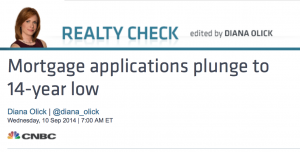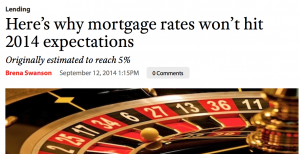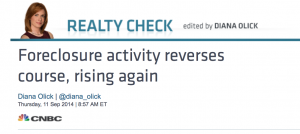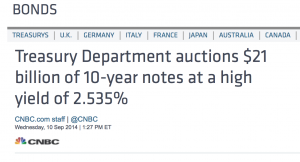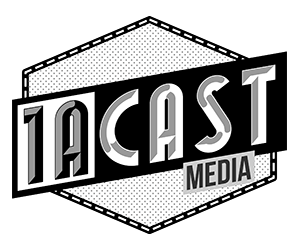Several indicators reflect a housing market set back.
Uncertainty about the economy, job stability, and inability to finance continue to scare many potential residential buyers away, especially first time buyers. At the recent Pacific NW Mortgage Bankers Conference, volumes cited by the residential mortgage banker community were running some 25% – 30% below 2013 levels, resulting from lower refinance rates and tepid mortgage volume for home purchases.
And the bond market will impact mortgage rates sooner or later. Probably sooner. Take a look at these quotes from CNBC:
“Demand for U.S. Treasurys waned for a fifth consecutive session, ahead of an official auction of 10-year notes on Wednesday and a key Federal Reserve meeting next week.”
And,
“Ten-year notes fell in price to yield 2.53 percent on Wednesday, ahead of a Treasury auction of $21 billion in the benchmark bonds. Auction performance has weakened sharply recently and the last three auctions have tailed.
“Bond yields have risen in recent days—pressuring Wall Street—on fears the Federal Reserve could raise interest rates sooner rather than later. This came after fresh research from the San Francisco Fed suggested investors’ expectations for rate hikes lagged those of the central bank.”
And they continued their ascent on Friday,
Benchmark 10-year notes were last down 18/32 in price with the yield at 2.61 percent, slightly below a session high of nearly 2.62 percent, the highest since July 8.
I think it is hard to suggest that this rate increase is a long term phenomena yet, but at some point the Fed is likely to lose its credibility with Treasury bond investors over its easing policy. Especially given their insistence that unemployment is nearing 6% and inflation only 2% (one can easily challenge both these assertions). But here is the counter argument. As pointed out in this article, it is hard to refute the potential for unmitigated disaster in the international scene (given this President) which would promote the flight of investors to the safety of Treasuries, driving up prices while driving down interest rates once again.


